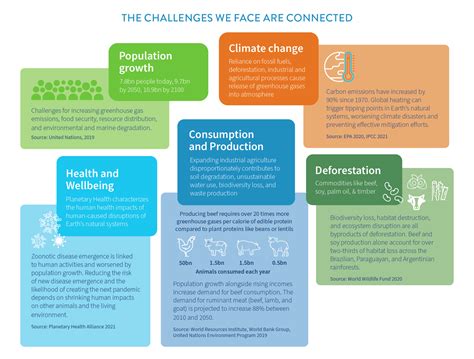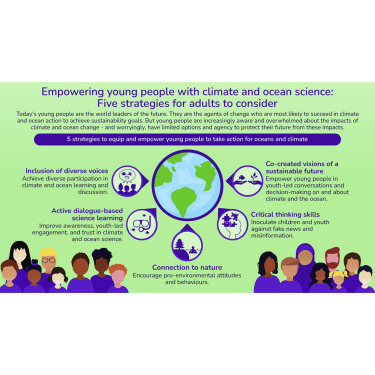Environmental science is a dynamic and interdisciplinary field that combines knowledge from biology, chemistry, geology, and social sciences to understand and address the challenges facing our planet. From climate change and pollution to habitat destruction and resource depletion, the world is facing significant environmental issues. Understanding the principles of environmental science is crucial not only for professionals in the field but also for individuals looking to make informed decisions that positively impact the Earth. This comprehensive guide will explore key concepts, scientific methods, human impacts, and sustainable solutions, providing practical insights and real-world applications for anyone interested in promoting environmental stewardship and sustainability.
Discover the intricacies of this topic with xotools.xyz
1. Introduction to Environmental Science
Environmental science is the study of the interactions between the physical, chemical, and biological components of the Earth. It seeks to understand how natural systems function and how human activities influence these systems. This interdisciplinary field draws from a range of scientific disciplines, including biology, chemistry, geology, and physics, to address environmental problems and develop solutions for sustainability.
In today’s rapidly changing world, environmental science plays a critical role in helping us understand the consequences of human impact on the planet. From rising temperatures and melting ice caps to deforestation and loss of biodiversity, the issues we face are both complex and urgent. Environmental scientists work to analyze these issues, predict future outcomes, and offer sustainable strategies to mitigate the damage.
The field also encompasses the study of ecosystems, energy flow, pollution control, natural resource management, and climate science. By applying scientific principles, environmental scientists can assess risks and develop informed policies to protect both natural environments and human populations. Understanding these principles is essential for anyone seeking to engage with environmental challenges—whether as a policymaker, business leader, or concerned citizen. This section lays the foundation for exploring the key concepts, methods, and solutions that will be discussed throughout this guide.

2. Key Concepts and Principles
Environmental science is built on several key concepts and principles that guide our understanding of ecosystems and human interactions with the environment. One fundamental concept is interdependence, which emphasizes how all living organisms and non-living elements of an ecosystem are interconnected. Changes in one part of the system can ripple through and affect others, making it critical to understand the balance of these relationships.
The principle of sustainability is central to environmental science. It focuses on meeting the needs of the present without compromising the ability of future generations to meet theirs. This concept encourages resource conservation, pollution reduction, and long-term planning for environmental health.
Another key principle is the law of conservation of matter, which states that matter cannot be created or destroyed, only transformed. This principle underlies the importance of understanding material cycles, such as the carbon and nitrogen cycles, in maintaining ecological balance.
Biodiversity, or the variety of life on Earth, is another core concept, highlighting the importance of preserving diverse species and ecosystems for the stability of natural systems.
Lastly, the concept of environmental justice underscores the fair treatment of all people in relation to environmental policies and practices. This includes recognizing that marginalized communities often face disproportionate environmental risks and should be involved in decision-making processes to ensure equitable outcomes.

3. Scientific Methods in Environmental Research
Scientific methods are crucial in environmental research, providing a structured approach to understanding complex environmental issues. The process typically begins with observation, where researchers identify a problem or pattern in the environment. This leads to forming a hypothesis, a testable explanation for the observed phenomenon.
Next, experiments are conducted to gather data and test the hypothesis. These experiments may involve fieldwork, laboratory analysis, or computer simulations, depending on the nature of the research. During this phase, precise measurements and data collection are essential to ensure accurate results.
After data collection, scientists analyze the findings using statistical tools to determine whether the hypothesis is supported. Peer review and replication by other researchers are also important steps to validate results.
The scientific method enables environmental scientists to make evidence-based conclusions and recommendations, helping to solve real-world problems like climate change, pollution, and habitat loss. This rigorous approach ensures that environmental policies and solutions are grounded in reliable research.

4. Human Impact on the Environment
Human activities have a profound impact on the environment, often leading to significant ecological changes. Industrialization, urbanization, and deforestation have resulted in the widespread degradation of natural habitats, threatening biodiversity and ecosystem stability. One of the most pressing issues is climate change, driven by the excessive burning of fossil fuels, which releases large amounts of carbon dioxide and other greenhouse gases into the atmosphere. This leads to global warming, melting ice caps, rising sea levels, and more extreme weather events.
Pollution, another major human impact, contaminates air, water, and soil. Industrial waste, agricultural runoff, and plastic debris are some of the main pollutants that harm wildlife and disrupt ecosystems. Additionally, overexploitation of natural resources, such as mining, fishing, and deforestation, depletes resources faster than they can regenerate, endangering future sustainability.
Urban expansion and agriculture also contribute to habitat destruction, reducing the land available for wildlife and altering the natural landscape. These impacts not only disrupt the balance of ecosystems but also affect human populations, particularly those dependent on natural resources for their livelihoods. Understanding and mitigating these human-induced environmental impacts is critical to achieving long-term sustainability and environmental health.
5. Environmental Policies and Regulations
Environmental policies and regulations play a vital role in managing and mitigating human impact on the environment. Governments and international organizations establish these policies to protect ecosystems, conserve natural resources, and reduce pollution. Key environmental regulations often focus on air and water quality, waste management, wildlife conservation, and climate change mitigation.
At the global level, agreements like the Paris Agreement aim to unite countries in reducing greenhouse gas emissions to combat climate change. National and regional policies, such as the U.S. Clean Air Act or the European Union’s environmental directives, set legal standards for air pollution, water safety, and industrial emissions, holding industries and governments accountable for environmental harm.
Environmental regulations also promote the use of sustainable practices, encouraging businesses to adopt cleaner technologies, reduce waste, and conserve energy. Environmental impact assessments (EIAs) are a common regulatory tool used to evaluate the potential environmental consequences of development projects before they are approved.
These policies, though crucial, often face challenges from economic interests and political resistance. Nonetheless, strong regulations are essential for protecting ecosystems, safeguarding human health, and ensuring that future generations inherit a stable and healthy environment.
6. Sustainable Practices and Solutions
Sustainable practices and solutions are essential for addressing environmental challenges and ensuring long-term ecological balance. Sustainability involves meeting current human needs without depleting resources or causing irreversible harm to the environment. Key sustainable practices focus on energy, resource management, waste reduction, and conservation.
One of the most significant solutions is the shift towards renewable energy sources, such as solar, wind, and hydropower. These alternatives reduce reliance on fossil fuels and help lower greenhouse gas emissions, a major driver of climate change. Energy efficiency, through improved technology and practices, also plays a crucial role in reducing energy consumption.
In agriculture, sustainable practices like crop rotation, organic farming, and permaculture promote soil health, reduce water use, and minimize the need for chemical fertilizers and pesticides. These methods not only protect the environment but also support long-term food security.
Waste management solutions, such as recycling, composting, and reducing single-use plastics, help limit pollution and conserve natural resources. Water conservation strategies, including rainwater harvesting and wastewater treatment, are also vital in regions facing water scarcity.
By adopting these sustainable practices, individuals, communities, and industries can contribute to the preservation of ecosystems and reduce their environmental footprint, helping to create a more sustainable future.
7. Case Studies and Real-World Applications
Case studies and real-world applications of environmental science provide valuable insights into how principles and practices are applied to address environmental challenges. One notable example is the restoration of the Chesapeake Bay, a large estuary in the U.S. Efforts to reduce nutrient pollution from agriculture and urban areas have led to improved water quality and the revival of marine life, demonstrating the effectiveness of targeted policies and community involvement.
In another case, the use of renewable energy in Denmark has significantly reduced the country’s reliance on fossil fuels. By investing in wind power and energy-efficient technologies, Denmark has become a global leader in sustainable energy, illustrating the potential of clean energy solutions.
Urban greening projects, such as New York City’s High Line park, showcase how repurposing unused spaces for green areas can enhance biodiversity, improve air quality, and provide recreational spaces for residents.
These case studies highlight successful applications of environmental science principles and offer valuable lessons for addressing similar ch
8. Career Opportunities in Environmental Science
Career opportunities in environmental science are diverse and offer paths for individuals passionate about protecting and improving the environment. Environmental scientists can work in various sectors, including government agencies, non-profit organizations, research institutions, and private industry.
Roles such as environmental consultants involve assessing environmental impact, advising on compliance with regulations, and recommending sustainable practices. Environmental policy analysts focus on developing and evaluating policies and regulations aimed at environmental protection and sustainability.
Fieldwork positions, like ecologists and conservation biologists, involve studying ecosystems, monitoring wildlife, and working on habitat restoration projects. Additionally, environmental engineers design and implement solutions for pollution control, waste management, and sustainable infrastructure.
Academic and research positions are available for those interested in advancing scientific knowledge and developing innovative solutions to environmental challenges. Educators and outreach coordinators also play a crucial role in raising public awareness and promoting environmental stewardship.
Overall, careers in environmental science are not only rewarding but also essential for addressing pressing global issues and fostering a sustainable future.
9. Resources for Further Learning
For those interested in deepening their understanding of environmental science, a variety of resources are available. Academic textbooks and scientific journals provide in-depth knowledge on specific topics. Popular texts include “Environmental Science: A Global Concern” by William Cunningham and Mary Cunningham and “Principles of Environmental Science” by William P. Cunningham.
Online courses and educational platforms such as Coursera, edX, and Khan Academy offer courses on environmental science and sustainability. Institutions like the Environmental Protection Agency (EPA) and the United Nations Environment Programme (UNEP) provide valuable reports, data, and resources on environmental issues and policies.
Websites like National Geographic and the World Wildlife Fund (WWF) offer articles, videos, and interactive content on a wide range of environmental topics. Additionally, joining professional organizations such as the American Association for the Advancement of Science (AAAS) or the Society for Conservation Biology (SCB) can provide networking opportunities, access to research, and professional development.
Engaging with these resources can enhance your knowledge and contribute to informed decision-making and action in environmental science.
10. Conclusion and Call to Action
In conclusion, understanding and applying environmental science principles is crucial for addressing the pressing challenges our planet faces. From the complex interactions within ecosystems to the impacts of human activities, environmental science provides the tools and knowledge necessary to promote sustainability and protect natural resources. By exploring key concepts, scientific methods, and real-world applications, we can better appreciate the importance of informed environmental decision-making.
The journey towards a sustainable future requires collective effort and individual commitment. It is essential to stay informed about environmental issues, support policies and practices that reduce ecological footprints, and actively engage in conservation efforts. Whether through career opportunities in environmental science or personal lifestyle changes, everyone has a role to play.
We encourage you to continue learning, advocate for positive change, and participate in local and global environmental initiatives. Together, we can make a meaningful difference and ensure a healthier, more sustainable world for future generations. Your actions today can pave the way for a better tomorrow.
xotools.xyz









